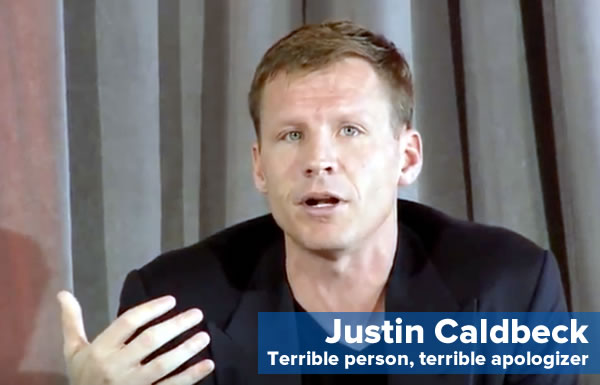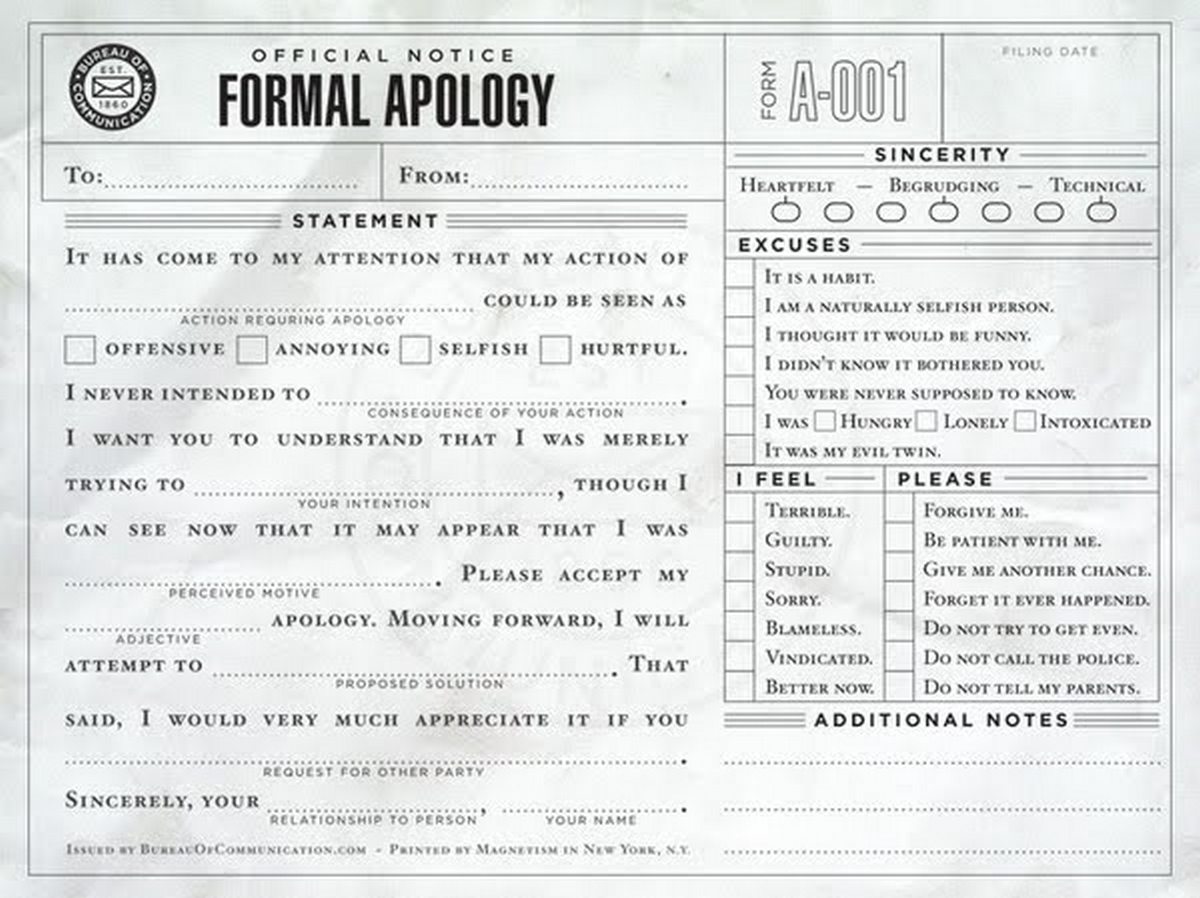How not to apologize

Among the “brilliant jerks” who are losing their jobs in Silicon Valley these days is venture capitalist Justin Caldbeck of Binary Capital. That’s because it recently came to light that for years, he’s been sexually harassing women in tech while discussing business and using his power as a connected person with influence and money to gain sexual favors and silence anyone calling him out on his sleazy behavior.
He’s stepping down, and issued a typical abuser’s apology, which went over about as well as this:
It’s a terrible apology for many reasons, the first of which is that it open with it being all about “me, me, MEEEE!!!”:
The past 24 hours have been the darkest of my life. I have made many mistakes over the course of my career, some of which were brought to light this week. To say I’m sorry about my behavior is a categorical understatement. Still, I need to say it: I am so, so sorry.
You can read it here (be prepared to roll your eyes), and make sure you read these two exegeses as well:
- Brad Feld: I don’t accept this apology
- Brenden Mulligan: Everything I hate about Justin Caldbeck’s statement
How to apologize

Sooner or later, you’ll end up in a situation where you are in the wrong and will have to make some kind of apology. When this happens, you should keep in mind that in building civilization over the past 10,000, we’ve had plenty of time to refine the art of the apology. There’s no shortage of resources out there that cover the topic of saying “I’m sorry.”
Most of these guides say that good apologies follow the same pattern, and Dr. Beth Polin, co-author of The Art of the Apology, has distilled this pattern to 6 components:
- An expression of regret — this, usually, is the actual “I’m sorry.”
- An explanation (but, importantly, not a justification).
- An acknowledgment of responsibility.
- A declaration of repentance.
- An offer of repair.
- A request for forgiveness.
As she says in this article, The Apology Critics Who Want to Teach You How to Say You’re Sorry:
“We found that an apology with all six components is much more effective at repairing trust than an apology that includes only one component, or some combination of three of the components. So if you’re apologizing, if you can get all six in there, that’s going to be better than offering one to three.”
You might also find SorryWatch interesting. It’s a blog devoted to dissecting and critiquing public apologies. It’s pretty interesting reading!
